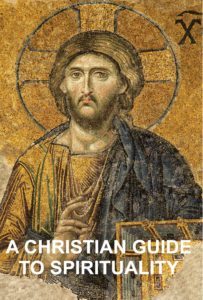Who is God?
The heavens declare the glory of God, and the sky above proclaims his handiwork. Day to day pours out speech, and night to night reveals knowledge. There is no speech, nor are there words, whose voice is not heard. ( Ps 19:1–3)
By Stephen W. Hiemstra
When I was young, I wanted to be a pilot. I learned to read a map, work with a compass, and navigate by the stars in pursuit of my goal. The idea that God would use a star to guide the wise men to the baby Jesus fascinated me. Equally fascinating is how God reveals himself to us in the creation story. The Bible starts telling us that: “In the beginning, God created the heavens and the earth.” (Gen 1:1) What do these simple words tell us about God?
The phrase—in the beginning—tells us that God is eternal. If creation has a beginning, then it must also have an end. This implies that creation is not eternal, but the God who created it must be. If our eternal God created time, both the beginning and the end, then everything God created belongs to God. Just as the potter is master over the pottery he makes, God is sovereign over creation (Jer 18:4-6). God did not win creation in an arm-wrestling match or buy it online or find it on the street, he created it—God is a worker (Whelchel 2012,7).
God’s sovereignty is reinforced in the second half of the sentence when it says: God created the heavens and the earth. Here heaven and earth form a poetic construction called a merism. A merism is a literary device that can be compared to defining a line segment by referring to its end points. The expression—heaven and earth—therefore means that God created everything. Because he created everything, he is sovereign over creation; and sovereignty implies ownership.
So, from the first sentence in the Bible we know that God is eternal and he is sovereign. We also know that he is holy. Why? Are heaven and earth equal? No. Heaven is God’s residence. From the story of Moses’ encounter with God in the burning bush (Exod 3:5), we learn that any place where God is becomes holy in the sense of being set apart or sacred. Because God resides in heaven, it must be holy. Earth is not. Still, God created both and is sovereign over both (Rev 4:11).
Genesis paints two other important pictures of God.
The first picture arises in Genesis 1:2. Here the breath, or spirit of God, is pictured like a bird hovering over the waters. Hovering requires time and effort suggesting ongoing participation in and care for creation. The Bible speaks exhaustively about God’s provision for us. Breath translates as Holy Spirit in the original languages of the Bible, both Hebrew (Old Testament) and Greek (New Testament).
The second picture appears in Genesis 2, which retells the story of creation in more personal terms. As a potter works with clay (Isa 64:8), God forms Adam and puts him in a garden. Then, he talks to Adam and directs him to give the animals names. And when Adam gets lonely, God creates Eve from Adam’s rib or side, a place close to his heart.
Genesis 1 and 2, accordingly, paint three pictures of God: 1. God as a mighty creator; 2. God who meticulously attends to his creation; and 3. God who walks with us like a friend. While the Trinity is not fully articulated in scripture until the New Testament, God’s self-disclosure as the Trinity appears from the beginning (Chan 1998, 41).
The Lord’s Prayer casts a new perspective on Genesis 1:1when Jesus says: “Your kingdom come, your will be done, on earth as it is in heaven.” (Matt 6:10) Because we are created in God’s image, we want our home to modeled after God’s.
References
Chan, Simon. 1998. Spiritual Theology: A Systemic Study of the Christian Life. Downers Grove, IL: IVP Academic.
Whelchel, Hugh. 2012. How Then Should We Work? Rediscovering the Biblical Doctrine of Work. Bloomington, IN: WestBow Press.
Who is God?
Also see:
Preface to A Christian Guide to Spirituality
Other ways to engage online:
Author site: http://www.StephenWHiemstra.net
Purchase Book: http://www.T2Pneuma.com
Newsletter: https://bit.ly/Thanks_2020
The post Who is God? appeared first on T2Pneuma.net.




